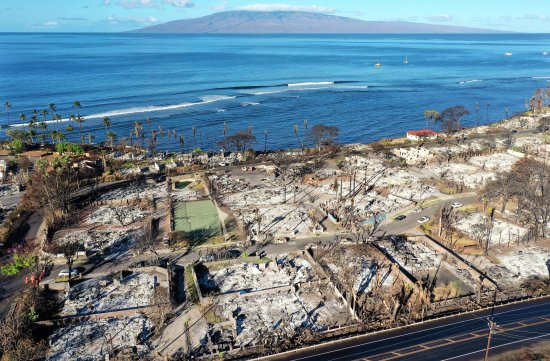
It's not the reach of a fire that matters most; it's the speed. Understanding this can help society better prepare.
The Hawaiian town of Lahaina did not know what hit it in August 2023, when a wildfire cut a path of death and destruction from the center of the community to the Maui coastline, claiming 101 lives and destroying more than 2,200 structures. Colorado’s Marshall fire, sparked in December 2021, wrought similar destruction: driven by winds in excess of 100 mph, it traveled three miles within the hour it started and incinerated in excess of 1,000 homes. The 2018 California Camp Fire dwarfed them both, putting the torch to 16,000 homes and burning through nearly 52,000 acres on the day it started.
[time-brightcove not-tgx=”true”]For all of the death and destruction and costs of rebuilding, the most worrisome metric concerning the blazes may involve not so much the scope of their damage but the flash-paper speed with which they and other wildfires have been spreading. And in the era of climate change, perhaps this intensely fast destruction should be the new marker of American megafires. Understanding these events in this way could better help society prepare for and prevent them.
That’s the conclusion of a new study published in Science, which used NASA satellite data to survey more than 66,000 wildfires in the U.S. from 2001 to 2020. The researchers determined that while only 1,616 of the fires, or 2.7%, met the standard of fast growth rate (FGR) fires—which the researchers defined as blazes that spread across 4,000 acres per day—they accounted for a whopping 78% of structures destroyed, 66% of fatalities, and 61% of suppression costs, or $18.9 billion. These fast-growing fires have increased in frequency by nearly 250% in the first 20 years of the 21st century, with California especially showing a jump of 398% in peak daily growth rate.
“The modern era of megafires is often defined based on wildfire size,” wrote Jennifer Balch, associate professor of geography at the University of Colorado, Boulder, and her colleagues in the new study, “but it should be defined based on how fast fires grow and their consequent societal impacts.” While large fires have a major effect on air quality, ecosystems, and the release of planet-warming carbon, it is fast fires that have the greatest impact on infrastructure damage, evacuation efforts and, ultimately, death tolls.
The data used in the study were gathered by a generation’s worth of observations conducted by the Moderate Resolution Imaging Spectroradiometer aboard NASA’s Earth-observing Terra and Aqua satellites. The blazes observed resulted in 337 fatalities, 5,623 injuries, and 925 emergency evacuation orders affecting more than 1.5 million households, half of which were within less than a mile of a FGR fire. A total of three million structures were within 2.5 miles of such a blaze.
As with so much other environmental upheaval, it is climate change that is fueling these fast fires. Hot, dry, and windy conditions are especially conducive to rapidly spreading wildfires. And, while there’s already been a significant increase in these deadly events, the authors cite climate models that project the number of such megafires will rise between 50% to 250% as the environment further heats up, dries out, and grows windier still. Grasslands especially provide “fine, flashy fuels,” that are particularly in peril of fast blazes, the study notes.
Preparing for fast fires requires some straightforward steps. The authors recommend changing building codes to incentivize the use of fire-resistant materials in structures; clearing flammable materials like brush and dry grass from the vicinity of structures; preemptively planning for emergency evacuations; and digging fuel-free firebreaks around communities.
“With warming temperatures increasing the likelihood of wildfires across the U.S.,” the researchers wrote, “we would expect to see more fast fire events in the future. Devastating and fast-moving wildfires…show that it is critical that we plan for the increasing pace of fires.”